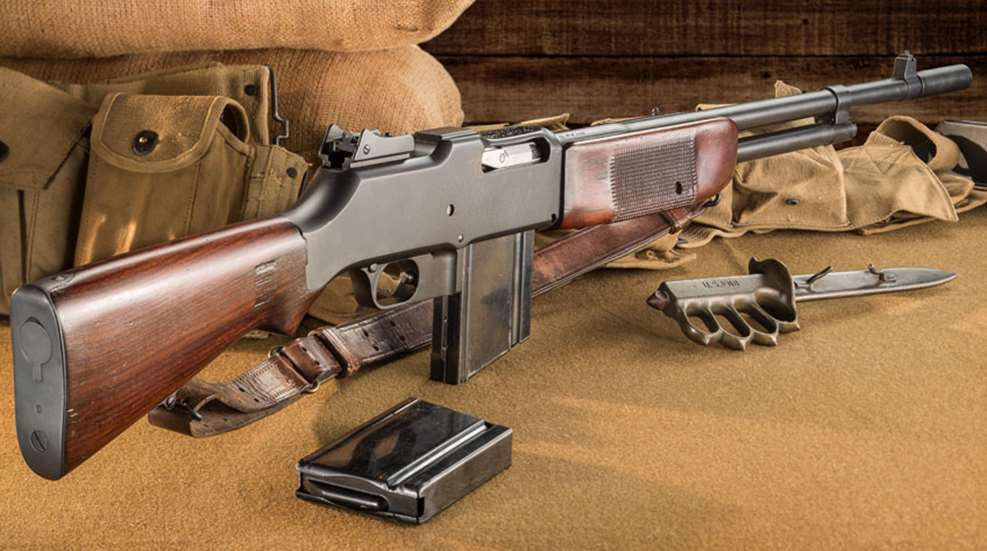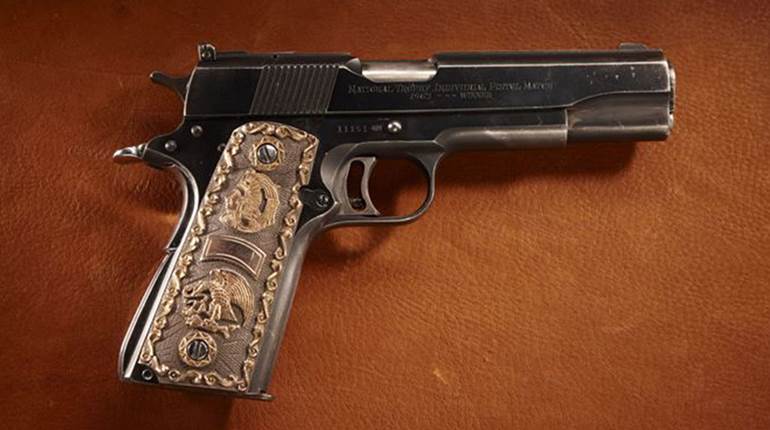
In early 1917, the United States began its inevitable path to being pulled into the Great European War that began in 1914. John M. Browning of Ogden, Utah, foresaw the need for lighter machine guns and took a working example of his new automatic rifle to Hartford, Conn., to demonstrate to the directors of Colt’s on Feb. 27, 1917.
Exactly a year later, in Washington D.C., 300 American military officers and assorted Congressional leaders were able to personally try out Browning’s new automatic rifle chambered in .30-’06 Sprg. Dubbed the Browning Automatic Rifle (BAR), Winchester was given the initial order for 25,000 BARs, and Gen. John J. Pershing’s troops began to take delivery of them in France in June 1918. The U.S. Model of 1918 Browning Automatic Rifle’s first combat use was recorded on Sept. 22, 1918, by the men of the 79th Infantry Division.

The rest, as they say, is history. The BAR and its successor variants saw service from the Meuse-Argonne to Vietnam. More than 500,000 were produced, and it remains one of Browning’s most amazing contributions to the U.S. military’s inventory of small arms that helped win two World Wars. For a more in-depth look at the original Model of 1918, check out Bruce Canfield's extensive look covering this first model in "The U.S. Model of 1918 Browning Automatic Rifle."
Of course, that wasn't the end for the Browning Automatic Rifle. Following WWI, the BAR served well in the U.S. Military, seeing action around the globe over the next two decades in places like China, Haiti and Nicaragua. A commercial model of the BAR entered the market under the name "Colt Monitor," which saw action not in a strange land overseas but in America's backyard as gangsters and FBI agents battled it out during the Prohibition Era. You can read about one such encounter in Barrington, Ill. here in "A Battle At Barrington: The Men & The Guns."
This wasn't the end for the Browning Automatic Rifle, though. Not by a long shot. Just prior to U.S. entry into WWII, the U.S. Military adopted the final and most widely produced version of the BAR: the M1918A2. Much had changed from the original BAR. The gun featured a hinged bipod, a modified buttstock and was capable of firing in full-automatic only, with a slow and fast rate of fire of 300-450 r.p.m and 500-650 r.p.m., respectively.
It wasn't only M1918A2 BARs that saw service during WWII. Many original Model of 1918 Browning Automatic Rifles went overseas to arm the British under Lend-Lease, escaping conversion into the M1918A2. After WWII, the BAR continued to see service in the U.S. Military in Korea, and many remained in inventory well into the 1960s, long past the adoption of the M60. For more details on the Browning Automatic Rifle's service, check out "John Browning's Automatic Rifle."
The NRA National Firearms Museum in Fairfax, Va., the NRA National Sporting Arms Museum at Bass Pro Shops In Springfield, Mo., and the NRA Whittington Center in Raton, N.M., offer the opportunity to learn the story of firearms, freedom and the American experience. nramuseums.com




































